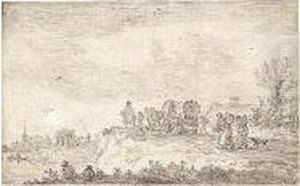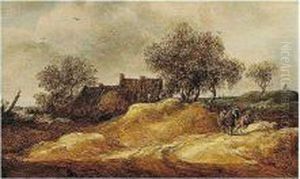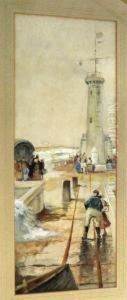A. Van Goyen Paintings
Jan van Goyen was a Dutch landscape painter of the Dutch Golden Age, an era in which Dutch art, science, trade, and the military were among the most acclaimed in the world. Van Goyen was born on January 13, 1596, in Leiden, Netherlands. He became an apprentice at the age of ten and went on to study under several masters, including Esaias van de Velde, a prominent landscape painter of the time.
Van Goyen's early works were influenced by Esaias van de Velde, and he initially painted in the traditional Flemish style, which was highly detailed and favored deep, rich colors. However, by the 1620s, he began to develop a more tonal style, characterized by a reduced color palette, focusing instead on variations of a single color to create depth and atmosphere. This style was innovative for the time and had a significant influence on the development of Dutch landscape painting.
Throughout his career, Van Goyen was a prolific artist, creating over 1,200 paintings, numerous drawings, and a few etchings. His subjects often included riverscapes, seascapes, and panoramic views, capturing the flat and watery Dutch landscape with a sensitive eye to the changing effects of light and weather. He was particularly skilled at depicting the sky and clouds, which often play a dominant role in his paintings.
Despite his artistic success, Van Goyen's finances were less stable. His speculative ventures in tulip bulbs and real estate led to financial difficulties, and he died in debt in The Hague on April 27, 1656. Today, Jan van Goyen is considered one of the masters of Dutch landscape painting, and his work is held in high regard for its contribution to the genre and its influence on later artists, including the young Rembrandt van Rijn.


